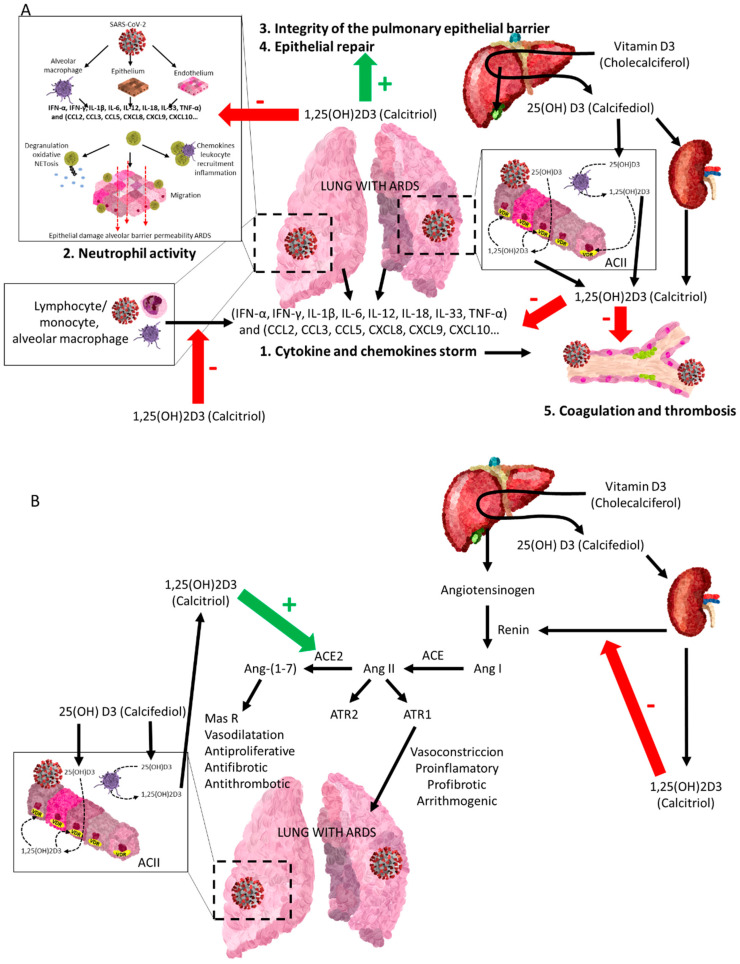Figure 5.
The vitamin D endocrine system (VDES) contributes to the reduction in acute respiratory distress syndrome (ARDS) and related clinics in COVID-19. Vitamin D receptor (VDR) and vitamin D endocrine system enzymes are expressed in activated monocytes/macrophages/granulocytes and lymphocytes and in bronchoalveolar epithelial cells. The availability of 25OHD3 (calcifediol) is essential for synthesizing 1,25(OH)2D3 (calcitriol), which through its endocrine, auto/paracrine action on VDR A: (1) decreases the intensity of the cytokine and chemokine storm, (2) modulates neutrophil activity, (3) maintains the integrity of the pulmonary epithelial barrier, (4) stimulates epithelial repair, and (5) directly and indirectly decreases the risk of hypercoagulability and pulmonary or systemic thrombosis. B: is a powerful negative regulator of the RAAS, inhibiting renin and the ACE/Ang II/AT1R cascade and inducing ACE2/Ang-(1-7) axis activity, contributing to decrease the intensity of ARDS in all its aspects, following SARS-CoV-1 infection. (A) SARS-CoV-2 = severe acute respiratory syndrome coronavirus 2; IFN-α, IFN-γ = interferon gamma α and γ; IL-1β, IL-6, IL-12, IL-18, IL-33 = interleukin-1β, 6, 12, 18, 33; TNF-α = tumour necrosis factor-α; TGFβ = transforming growth factor α and β; CCL2, CCL3, CCL5 Chemokine = C-C motif ligand 2, 3, 5; CXCL8, CXCL9, CXCL10 = C-X-C (chemokine motif ligand 8, 9, 10). (B) ACII = alveolar cuboidal cells type II; SARS-CoV-2 = severe acute respiratory syndrome coronavirus 2; Ang I = angiotensin I; Ang II = angiotensin II; Ang-(1-7) = angiotensin 1-7; MasR = Mas G-protein-coupled receptor; AT1R and AT2R = angiotensin II receptor 1 and 2.

